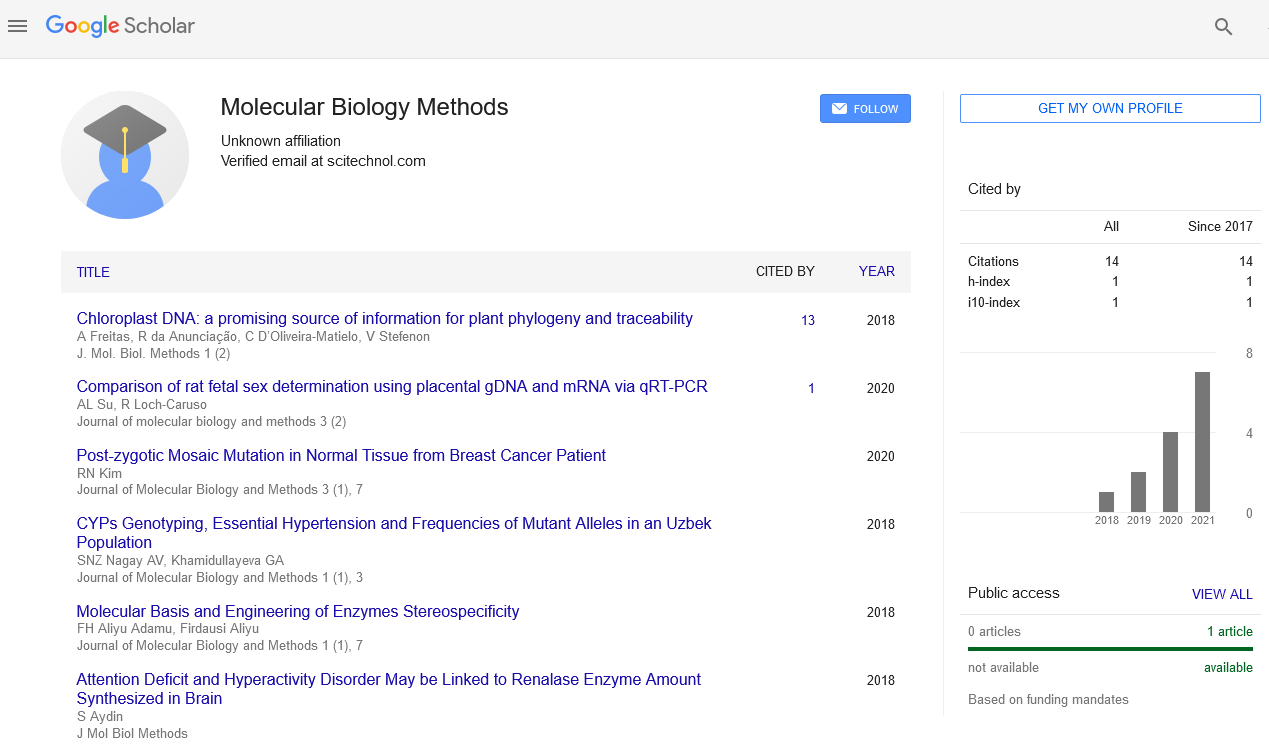Perspective, J Mol Biol Methods Vol: 7 Issue: 4
Genetic Engineering: Revolutionizing Biotechnology and Medicine
Natan Bartal*
1Department of Biology, Tel-Aviv University, Tel Aviv, Israel
*Corresponding Author: Natan Bartal,
Department of Biology, Tel-Aviv University,
Tel Aviv, Israel
E-mail: bartalnatan@ac.il
Received date: 25 November, 2024, Manuscript No. JMBM-24-154474;
Editor assigned date: 28 November, 2024, PreQC No. JMBM-24-154474 (PQ);
Reviewed date: 12 December, 2024, QC No. JMBM-24-154474;
Revised date: 19 December, 2024, Manuscript No. JMBM-24-154474 (R);
Published date: 26 December, 2024 DOI: 10.4172/JMBM.1000182
Citation: Bartal N (2024) Genetic Engineering: Revolutionizing Biotechnology and Medicine. J Mol Biol Methods 7:4.
Description
Genetic engineering is one of the most important and transformative technologies in modern science. It involves the manipulation of an organism's genetic material its DNA to achieve desired traits or outcomes. The ability to alter genes has far-reaching applications in various fields, from medicine and agriculture to environmental science. This technology has unlocked new possibilities for solving complex biological problems and improving the quality of life. Despite its immense potential, genetic engineering has also sparked debates concerning ethical, environmental and societal implications, making it a subject of intense scrutiny and discussion.
At its core, genetic engineering involves altering the sequence of DNA in an organism’s genome. The process typically starts with identifying a gene of interest whether it’s a gene that could improve a crop’s resistance to pests or one that could potentially treat a genetic disorder. Once the gene is identified, it is isolated and inserted into the target organism’s genome using a variety of techniques, such as CRISPR-Cas9, recombinant DNA technology, or gene therapy. CRISPR, in particular, has revolutionized the field due to its precision, simplicity and affordability, making genetic manipulation more accessible to researchers across the globe.
In medicine, genetic engineering has enabled the development of life-saving treatments and therapies. One of the most prominent applications of genetic engineering is in the production of recombinant proteins, such as insulin, growth hormones and monoclonal antibodies, which are used to treat conditions like diabetes, growth disorders and cancers. Before genetic engineering, these proteins were often sourced from animals or human tissues, which were both inefficient and potentially risky. Today, engineered bacteria or yeast can be used to produce these proteins on a large scale, significantly reducing the cost and increasing the availability of these life-saving drugs.
Gene therapy is another revolutionary application of genetic engineering in medicine. This technique involves replacing, altering, or supplementing a patient’s defective genes with functional ones to treat genetic disorders. Diseases like cystic fibrosis, sickle cell anemia and muscular dystrophy, which were once considered incurable, now have the potential to be treated through genetic interventions. Although gene therapy is still in its early stages and faces challenges such as delivery mechanisms and safety concerns, its potential to cure genetic diseases is immense, offering hope to millions of people worldwide.
Genetic engineering also plays a vital role in agricultural biotechnology. Genetically Modified Organisms (GMOs) have become a key element of modern agriculture, enabling farmers to grow crops that are more resistant to pests, diseases and environmental stresses such as drought or salinity. GMOs have also been engineered to improve their nutritional content. For example, genetically modified rice known as “Golden Rice” has been designed to produce higher levels of vitamin A, addressing the problem of vitamin A deficiency in developing countries. Genetic engineering can also reduce the reliance on chemical pesticides, as crops can be engineered to resist pests, decreasing the need for harmful chemical treatments that have negative environmental impacts.
The use of genetic engineering in human reproduction, particularly germline editing (altering the genes of embryos), has been widely criticized and banned in many countries due to the unknown long-term consequences. The implications of germline editing are major, as changes made to the human genome can be passed down through generations, potentially altering the course of human evolution. Ethical concerns also arise regarding the consent of future generations, as they cannot be consulted about the genetic changes made to their DNA.
 Spanish
Spanish  Chinese
Chinese  Russian
Russian  German
German  French
French  Japanese
Japanese  Portuguese
Portuguese  Hindi
Hindi 